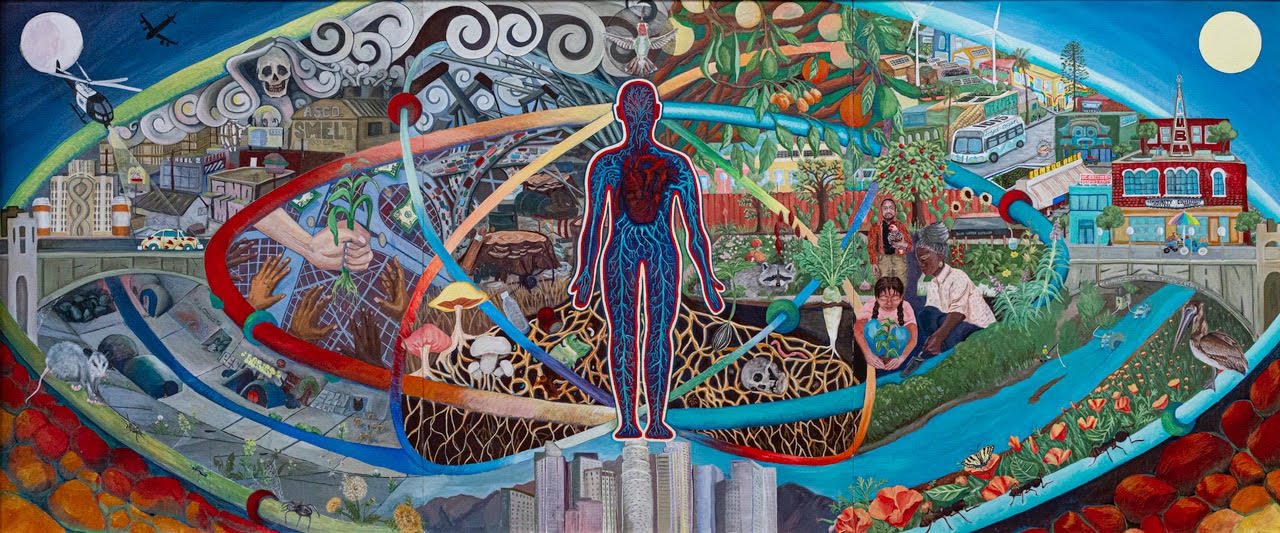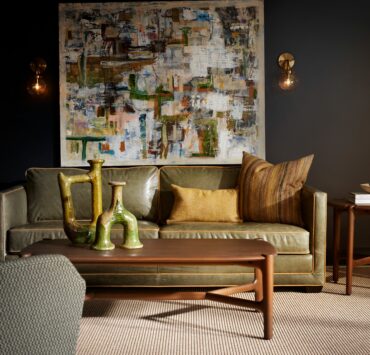“Before we talk about how we’re going to change the future with green buildings, we need to be able to see it.” That was Ben Stapleton’s big takeaway after months of collaboration with Climate Resolve and the Boyle Heights Art Conservatory on a mural depicting a clean energy vision for the future of the Los Angeles community of Boyle Heights. Stapleton, Executive Director of US Green Building Council-Los Angeles (USGBC-LA), observed, in real time, as the youth and artists involved in creating the mural were asked to not just pontificate but also illustrate their ideas about what a greener future looks like. Then, they were truly changed and inspired to to take action. Design News Now Editor in Chief, Courtney Porter, sat down for discussions with Ben Stapleton, and artist Omar G. Ramírez, who spearheaded the youth arts education on the project. Together they discussed the opportunities and challenges facing the green building community, arts education and mentorship and the connectivity between green building and profitable real estate. Click play on the videos below to watch their conversations.
Stapleton sees Los Angeles as a microcosm of the world. The city is unique in the sense that it experiences water scarcity, air quality and energy issues. It has earthquakes and fires, but it also has a robust media landscape, ample capital and the largest port in the country. That is why solving environmental problems in Los Angeles is a great challenge and a great place to start.
Omar G. Ramírez on the missing fundamentals in arts education
Arts education has been in steady decline due to defunding. With the youth artists Ramírez works with, there is some catching up on the basics to be done, like teaching color theory. The Boyle Heights mural presented an interesting opportunity to do just that. It was painted with natural-mineral paint from Keim that actually purifies the environment. Being derived from all natural materials also meant there were limitations in palette and the texture differs from acrylic paints muralists are used to working with, which is where the art fundamentals come in handy. The mural wasn’t solely about its contents, but also about its cultural context and the materials used to create it.
The costs of green building
Smart businesses like Google are all in on LEED-certifying their buildings because they recognize its direct link to profitability. While there is ample evidence pointing to more productive workers who take less sick days and increased rents as a direct result of green building, single and multi family homes are slower to adopt green building practices. Where did the green building community go wrong here? Stapleton attributes this to initially leading with green building as being the “right thing to do.” While nice, it was not the most productive method when it comes to mass adoption of green building practices. Within a capitalistic framework, people need to see how profitable green building can be first. Also on the topic of financial incentives, Stapleton says environmentally-friendly building methods and materials can be cost-neutral. The problems with cost arise when sustainable practices are an afterthought and introduced too late into the build process.
The biggest opportunities for the green building community
Green buildings house happier, healthier inhabitants, and they sell for higher asking prices and increase rents. Green realtors and designers are getting involved in educating the public about not just the health, but also the financial benefits. Builders and businesses are becoming aware of their embodied carbon (the carbon footprint of constructing the building and manufacturing materials) thanks to more transparent labeling on materials. That awareness alone makes it easy to slash 15% off a building’s emissions. Businesses are making pledges to be carbon-neutral within 20 or 30 years, but they need to be okay with saying “we’re not sure how to get there.” People like Ben Stapleton and the USGBC-LA are there to help aid in those solutions. So, what about individual responsibility? How can you live a little more green starting today?
How to live a little more green starting today
“It all starts with intentionality,” Stapleton says. Being aware of how you already consume water and energy, and how you create and dispose of waste sets the groundwork for making environmental changes. Then, plant some native plants and open the window for some natural air and sunlight. That’s enough for today. Tomorrow, you can build your zero carbon ready home. 😉




